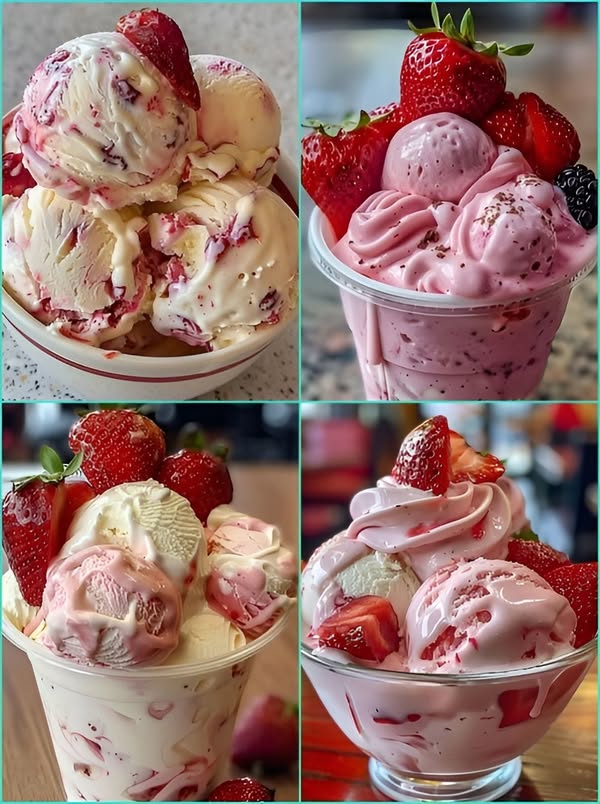ADVERTISEMENT
### **The 17th Century: The Emergence of Ice Cream as We Know It**
By the 17th century, ice cream became a popular treat among European aristocrats. In 1671, a recipe for frozen cream was written down by Italian chef Francesco Procopio, who opened a café in Paris. This café, called Café Procope, became the first place in Europe where ice cream was sold to the public. Procopio’s recipe included milk, sugar, and various flavorings, a foundation for what would eventually become modern-day ice cream.
### **The 18th and 19th Centuries: Ice Cream for the Masses**
Ice cream remained a luxury for the elite until the 18th century when it became more widely available to the general public. The invention of the ice cream churn in the 19th century by Nancy Johnson in 1843 revolutionized the process, making it easier to create smooth and creamy ice cream at home.
In 1851, the first American ice cream parlor opened in New York, and by the 20th century, ice cream was firmly established as a popular treat in the United States and beyond.
—
## **2. The Science of Ice Cream: What Makes It So Irresistible?**
Ice cream is more than just a frozen dessert; it’s a product of science. Understanding the science behind ice cream reveals why it’s so delicious and why we crave it so often.
### **The Role of Cream, Sugar, and Air**
The key ingredients in ice cream are **cream**, **sugar**, and **air**. The cream provides richness and a smooth texture, while sugar not only sweetens the ice cream but also lowers the freezing point of the mixture, ensuring that it doesn’t freeze into a solid block. This allows for the creamy, scoopable texture we all love.
Air plays a vital role in creating the light, airy texture of ice cream. The process of churning the ice cream as it freezes incorporates air into the mixture, a process known as **overrun**. High-quality ice cream typically has less overrun, meaning it’s denser and creamier. Lower-quality ice cream may have more air, which can make it feel lighter and less rich.
### **Freezing and Crystallization**
When making ice cream, freezing is crucial, but it’s not just about making it cold. The freezing process must be controlled carefully to ensure that the ice cream has the right texture. If the ice cream freezes too quickly, large ice crystals will form, which results in a grainy texture. Churning the ice cream during freezing breaks down these crystals and creates smaller, smoother ones, contributing to that creamy mouthfeel.
### **Flavoring Ice Cream: From Vanilla to Exotic Variations**
Ice cream flavors are created by incorporating various flavorings into the mixture, from the classic vanilla to exotic combinations like lavender honey or salted caramel. Vanilla, the most popular ice cream flavor, is derived from vanilla beans or vanilla extract, and it provides a neutral base for countless other flavor combinations. Other ingredients like chocolate, fruit purees, nuts, or even alcohol (such as rum or whiskey) can be added to create distinctive flavors.
—
## **3. Types of Ice Cream: Exploring the World of Frozen Desserts**
Ice cream may be universally loved, but around the world, it comes in many forms and variations. Let’s take a look at some of the most popular types of frozen desserts from different cultures.
### **Traditional Ice Cream (USA and Europe)**
The most common form of ice cream is the classic **dairy-based** variety, which is made from milk, cream, sugar, and flavorings. In the United States and many parts of Europe, ice cream must have at least 10% milk fat to be classified as “ice cream.” The rich, creamy texture and sweet flavors are what make traditional ice cream so beloved.
### **Gelato (Italy)**
Gelato is the Italian version of ice cream, but it’s made with more milk and less cream than traditional ice cream. This results in a denser, smoother texture with more intense flavors. Gelato is also typically served at a slightly warmer temperature than ice cream, which makes it softer and easier to scoop.
### **Sorbet (France)**
Sorbet is a dairy-free frozen dessert that’s made from fruit juice, sugar, and water. It’s often served as a palate cleanser between courses in fine dining or as a refreshing treat during the warmer months. Unlike ice cream and gelato, sorbet has a light, refreshing texture that highlights the natural flavors of the fruit.
For Complete Cooking STEPS Please Head On Over To Next Page Or Open button (>) and don’t forget to SHARE with your Facebook friends
